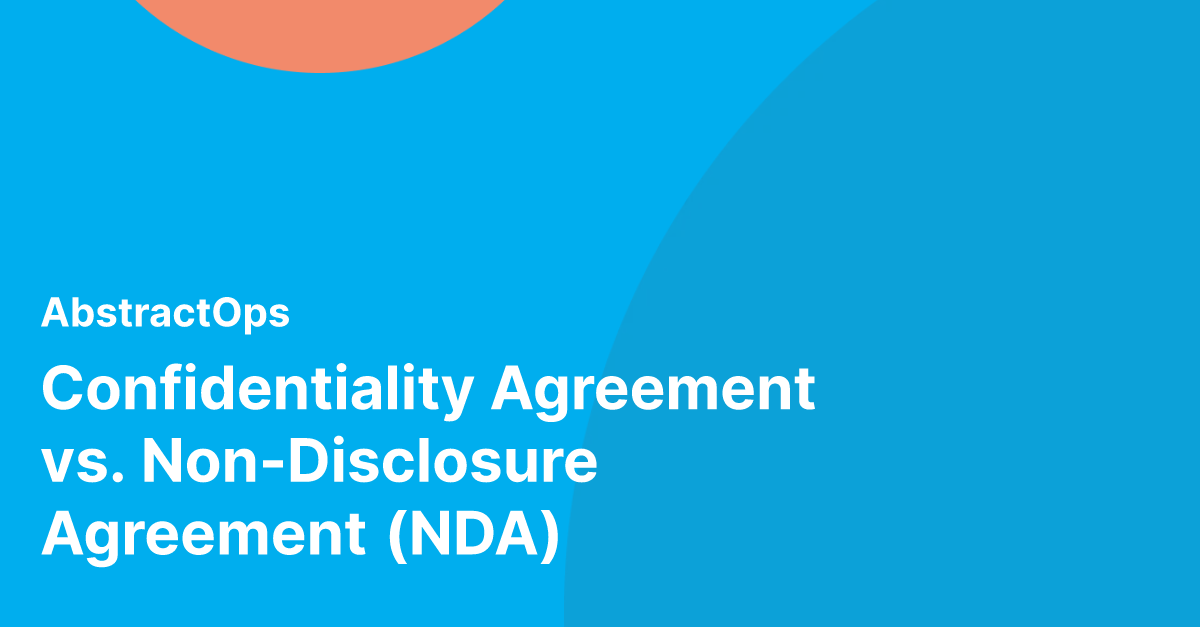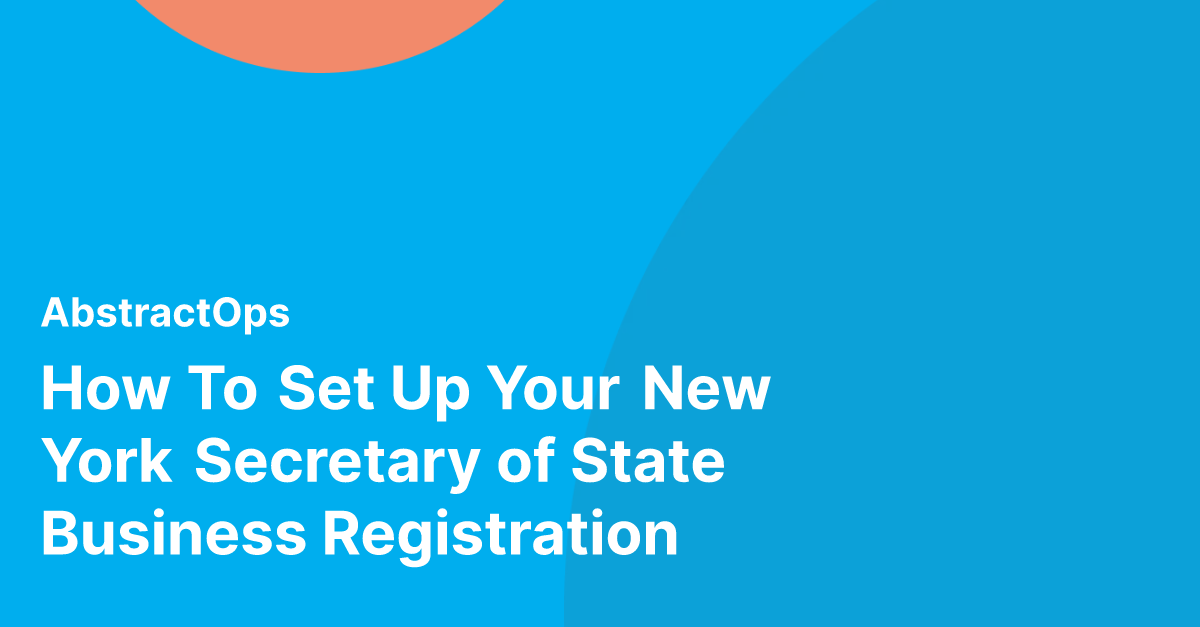Key Takeaways
- The terms confidentiality agreement and non-disclosure agreement are used so interchangeably that it's difficult to tell whether or not they're the same thing. Each term appears in a variety of business situations, thus complicating the situation further. Confidentiality agreements and non-disclosure agreements both essentially deal with the same thing: information security.
- A confidentiality agreement is a legal document that requires one or more parties to keep confidential/classified information secret. Whenever confidential business information or a trade secret is not meant to be revealed to the public domain, third parties, or market rivals, a confidentiality clause is frequently implemented.
- A non-disclosure agreement (NDA) is a documented agreement between two or more parties (e.g., people, organizations, entities, etc.) that forbids the unauthorized release of sensitive information.
- Whenever there is a one-way communication of classified material, an NDA is usually more suitable. A confidentiality agreement, on the other hand, is more suited during partnerships, such as when two or more parties are working on a project that requires exchanging sensitive information or the creation of some kind of intellectual property.
What is a Confidentiality Agreement?
A confidentiality agreement is a legal document that requires one or more parties to keep confidential/classified information secret. Whenever confidential business information or business expertise is not meant to be revealed to the public domain, third parties, or market rivals, a confidentiality clause is frequently implemented.
A confidentiality agreement differs from a waiver of confidentiality, in which the parties involved relinquish confidentiality commitments. A non-disclosure agreement (NDA) is a specific kind of confidentiality contract.
For an example of a confidentiality agreement, feel free to peruse this selection of 45 confidentiality agreement templates.
What is a Non-Disclosure Agreement?
An NDA is an agreement between two or more parties (e.g., people, organizations, entities, etc.) that forbids the unauthorized release of sensitive information. In a word, if you are presented with an NDA, you are being asked to promise not to disclose any confidential material that is discussed with you to any other entity or person. Conversely, if you are the one who is extending the NDA, then you are instructing somebody not to reveal the knowledge that you might disclose to them going forward.
Here is a free sample NDA template for your perusal.
What are the similarities between the two types of agreements?
The terms “confidentiality agreement” and “non-disclosure agreement” are used so interchangeably that it's difficult o tell whether or not they're the same thing. Each term appears in a variety of business situations, thus complicating the situation further. Confidentiality agreements and non-disclosure agreements both essentially deal with the same thing: information security. Similarly, any changes in how each title is used are usually minor and have more to do with the parties involved with the contract than with anything mandated by law.
This overview will go through such nuances and will assist you in determining whether your present confidentiality agreements provide adequate information protection.
What is the difference between the two?
A confidentiality agreement is a legal document that “binds one or more parties to keep secret or proprietary information confidential or proprietary.” An NDA is a kind of a contract that upholds secrecy; it does so by defining a confidential partnership and legally binding any parties who sign the NDA to that partnership. Whenever there is a one-way communication of classified material, an NDA is usually more suitable. A confidentiality agreement, on the other hand, is more suited during partnerships, such as when two or more parties are working on a project that requires exchanging sensitive information or the creation of some kind of intellectual property.
Inventors frequently utilize NDAs to preserve confidentiality before applying for a patent to legally assert their rights. In the U.S. and worldwide, a public revelation of a patented idea could waive patent rights. An NDA is an instrument that is frequently used to prevent this from happening until the inventor is able to file a patent application.
In order to preserve valuable business information and trade secrets, a company may ask potential hires to sign NDAs (known as employment NDAs) as a mandatory requirement. Some examples include:
- Before disclosing their award-winning culinary secrets/recipes to new chefs, a restaurant may ask employees to sign an NDA.
- To safeguard proprietary custom software and algorithms, a tech startup may ask its employees to sign an NDA during onboarding.
- To protect unique fabrication techniques that bring out market-leading cost efficiencies, a manufacturer could ask employees to sign an NDA.
- Employees in a marketing agency may be required to sign an NDA to keep the agency’s client contact list, service charges, and other confidential data from being shared with competitors.
Confidentiality agreements are frequently used at the commencement of a joint project or other business partnerships in which both parties are likely to share classified data. Confidentiality clauses, for instance, are commonly utilized by the original equipment manufacturer (OEM) and a supplier. The confidentiality agreement allows the OEM to give the vendor sensitive specifications while allowing the vendor to tell the OEM about its proprietary manufacturing method(s). Both parties are revealing knowledge that might be damaging to their respective businesses if disclosed. If you operate an early-stage startup, small business, or a division in a bigger corporation, then confidentiality contracts and NDAs are critical to safeguarding your startup's sensitive information or intellectual property.
When is a Confidentiality Agreement/Non Disclosure Agreement (NDA) used?
The terms “Confidentiality Agreement” or “Confidential Disclosure Agreement” (CDA) and “Non-Disclosure Agreement” (NDA) are often used in quite similar contexts. Both are attempting to prevent sensitive or private information from becoming public (or publicly known by any means). Although the two phrases (and the corresponding contracts) are more or less equivalent in nature, they are used in slightly different situations.
For instance:
1. When a higher level of secrecy is necessary, a confidentiality agreement is used.
Non-disclosure means that one must not reveal any personal or confidential information. However, maintaining confidentiality necessitates being much more proactive in ensuring that information is kept private. This could involve limiting the use of personal information; safeguarding electronic databases; preventing employee theft; establishing consultant NDAs; mandating freelancers to sign the same contract, and so on.
2. Confidentiality agreements are more commonly employed in professional and personal settings.
In such settings, the data could be commercially delicate or perhaps personally incriminating evidence that you come across while working (e.g., keeping the details of a conflict or even the fact that one occurred from turning into public knowledge).
3. In a third-party or startup scenario, a non-disclosure arrangement is increasingly common.
The type of data that needs to stay confidential in this situation might be a business secret, trademark, innovation; proprietary information; pricing arrangements; banking information, and so forth. These third parties could be vendors, distributors, customers, or, possibly, investors.
4. When the responsibility is one-way (or unilateral), a non-disclosure agreement is employed.
In the case of a unilateral (one-way) flow of information, a non-disclosure agreement is commonly employed. The contract is more likely to be characterized as a “confidentiality agreement” if there is a two-way (or multilateral) communication of classified or financially privileged information.
5. Non-disclosure agreements are more popular In the U.S.
In countries like Australia, New Zealand, England, and Canada, however, the term “Confidentiality Agreement” is more generally used.
Comparing confidentiality agreements with non-disclosure agreements
As mentioned above, because the phrases "nondisclosure agreement" and "confidentiality agreement" are virtually the same (with only minor variations), they are frequently used interchangeably. While an NDA is a legal document that safeguards the communication of nonpublic and/or privileged data with another party, a confidentiality agreement is a signed legal contract between two or more entities in which the participants are obligated to regard and handle any information exchanged with utmost secrecy. NDAs and confidentiality contracts can be unilateral (just one party shares private information) or mutual (all parties disclose confidential information).
The distinction between an NDA and a confidentiality agreement is mostly determined by the conditions under which they are implemented and the language applicable to the region/nation. NDAs are frequently one-sided, whereas confidentiality agreements are usually two-way. Both forms of agreements have many of the same components; therefore, the focus should be on making sure that all of the key terms are properly and clearly expressed to guarantee a smooth document execution.
Definition
Non-disclosure Agreement: A non-disclosure agreement is a legal instrument that allows one party to communicate nonpublic or private information with another.
Confidentiality Agreement: A confidentiality agreement is a legal contract between multiple parties in which the parties promise to handle information with the utmost respect and secrecy.
Terminology
Non-disclosure Agreement: In the U.S., the term "nondisclosure agreement" is widely used.
Confidentiality Agreement: In the United Kingdom, New Zealand, and Australia, the term "confidentiality agreement" is commonly employed.
Nature
Non-disclosure Agreement: In most cases, a nondisclosure agreement involves information of moderately confidential significance.
Confidentiality Agreement: When extremely sensitive material is involved, confidentiality agreements seem more appropriate.
Obligation
Non-disclosure Agreement: Nondisclosure agreements are commonly used for agreements with a one-way responsibility for maintaining confidentiality.
Confidentiality Agreement: A confidentiality agreement is used to describe an agreement with a two-way commitment to maintaining confidentiality.
Usage
Non-disclosure Agreement: In third-party or startup circumstances, nondisclosure agreements are more common.
Confidentiality Agreement: Confidentiality agreements are more commonly utilized in the military or in high-value corporate transactions.
Why do you need a non-disclosure agreement?
An NDA is a legal contract that safeguards the communication of non-public and/or proprietary data with a third party in order to protect a startup's confidential information. When a startup shares nonpublic and/or private information with another individual, group, or commercial entity, then this document is utilized.
For example, in an employment agreement, there may be a clause prohibiting the employee from disclosing their compensation to their coworkers. In the U.S., the term "nondisclosure agreement" is commonly used, and this form of agreement is more appropriate whenever there is a one-way obligation.
NDAs are commonly used in the following scenarios:
- Approaching a possible partner, buyer, or distributor about a business concept
- Providing a possible purchaser of your startup with fiscal, accounting, promotional, and/or other related information
- When a potential buyer or licensee is shown a new product/service
- Receiving services from a business or an individual who, in the course of delivering such services, may have access to classified information
- Providing employees with access to your startup's sensitive and proprietary information while they are on the job.
Nondisclosure Agreement Components
The following elements, among others, are frequently encountered in nondisclosure agreements:
- Acknowledgment of the parties
- Clarification of what data is classified
- The latitude (or scope) of the receiving party's confidentiality obligation.
- The duration of the contract
Why do you need a confidentiality agreement?
A confidentiality contract is a documented legal contract involving two or more parties in which the parties promise to treat information with respect and security. This sort of contract has legally enforceable contractual terms that prevent the parties from exposing sensitive and confidential information to the public or to a third party.
Confidentiality agreements are used when extremely sensitive information with a high monetary or social value is exchanged. For example, all military agreements are kept strictly private through confidentiality agreements. Confidentiality agreements are also often used in the corporate world.
Components of Confidentiality Agreements
“Confidential information” is a term used to describe information that is not publicly available. A confidentiality agreement should have the following components (among others):
- Explanation of the agreement's purpose
- Types of information that the parties can and cannot share
- Other requirements
- Provisions pertaining to the contract’s legal enforcement
- A provision requiring the parties to restore sensitive documents after usage
- A clause indicating that the agreement is enforceable by heirs and assigns
- Provisions for resolving any disagreements that arise



